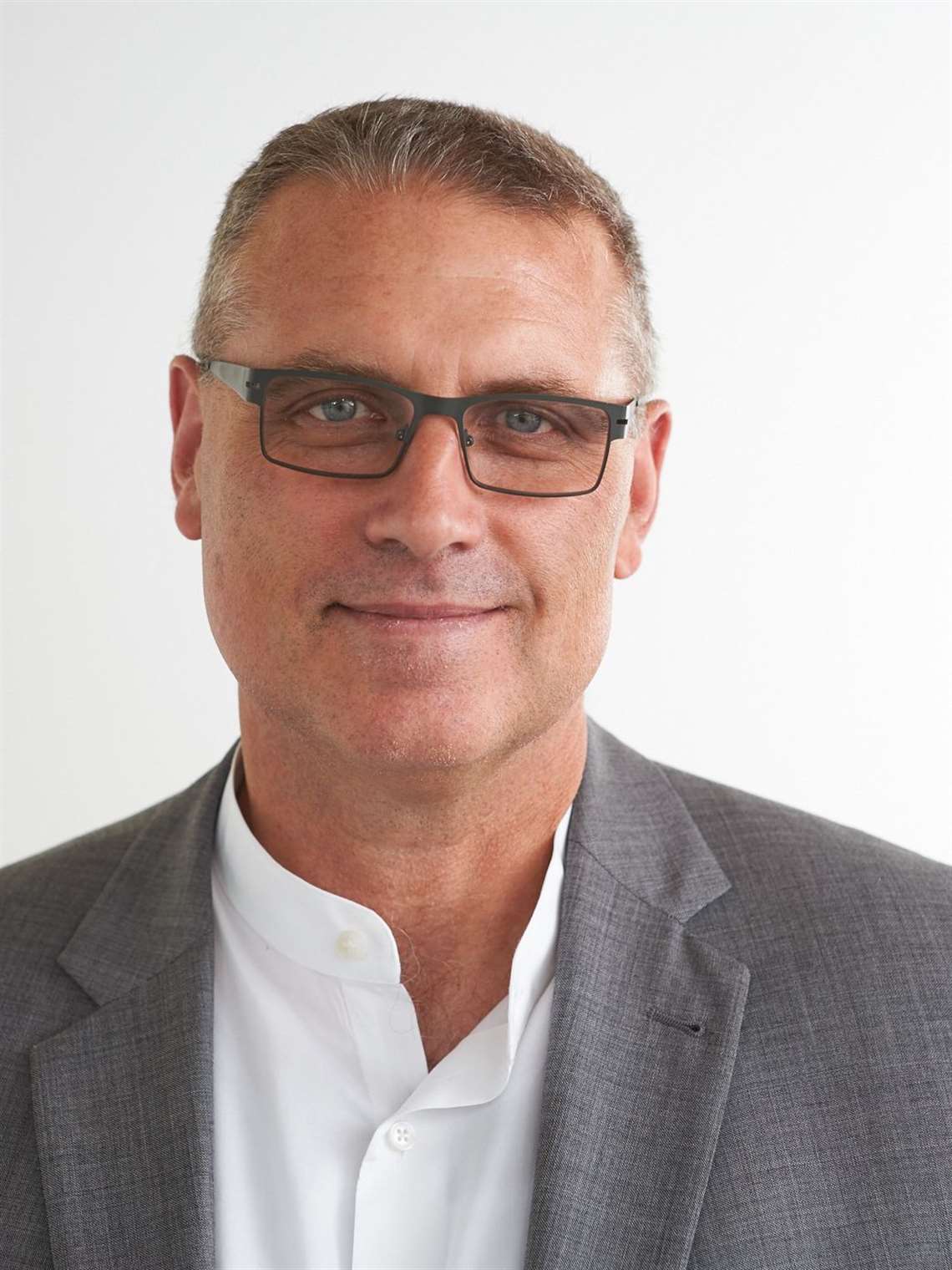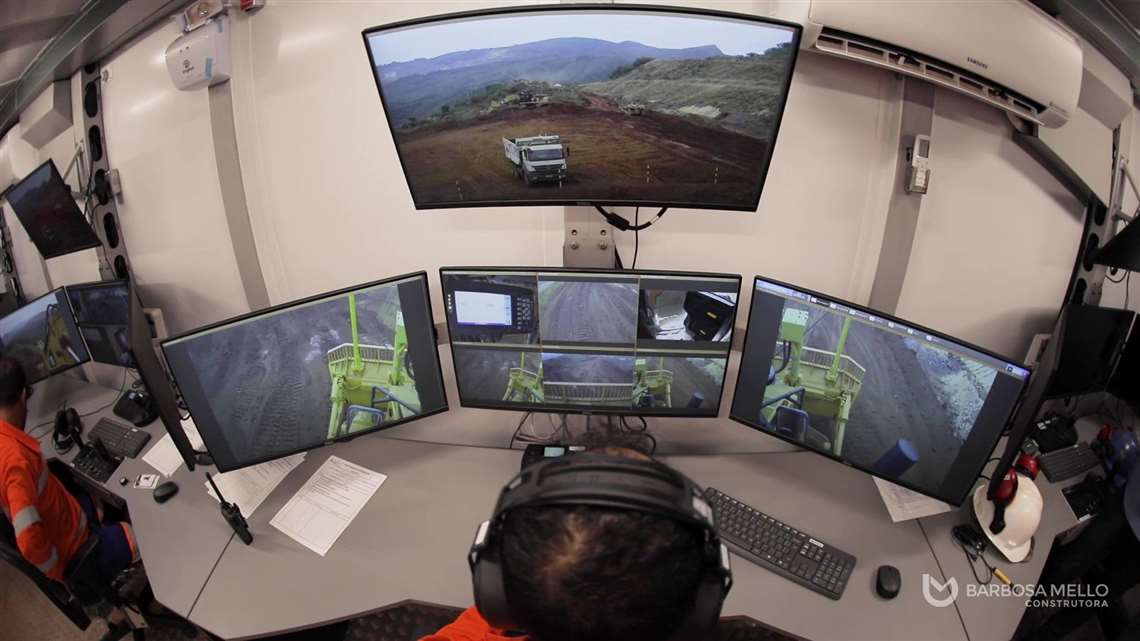Moving toward the infrastructure of 2030
08 February 2021
 Bryn Fosburgh, senior vice president at Trimble
Bryn Fosburgh, senior vice president at Trimble
When talking about the near- and long-term future of construction, there are two words that inevitably come up: technology and infrastructure. America’s aging system of transport is in dire need of attention, and President Joe Biden has pledged to make it a priority.
Technology is making leaps and bounds in every facet of our lives and construction is no different. How might advancing technology affect the way the infrastructure of the future is developed and utilised? We talked to Bryn Fosburgh, senior vice president at US-based software and technology company Trimble for some perspective.
Jenny Lescohier, KHL: With the new Biden administration now in office, there’s a lot of anticipation for additional funding for infrastructure. What are you hoping to see?
Bryn Fosburgh, Trimble: America’s current highway infrastructure is from the Eisenhower era, and state DOTs (departments of transportation) have done a fantastic job at keeping it maintained, but it won’t last forever. My hope is that the new administration looks at an infrastructure for the next 100 years.
What will that infrastructure look like? To start with, we’re going to see more and more electrical and autonomous vehicles in the coming years. As a society, we must think ahead to a multi-modal infrastructure that enables and facilitates electric vehicles, autonomy, platooning (commercial and consumer vehicles), high-speed rail and autonomous bus services.
Second, the transportation network of the future will not only be multi modal, it will also be multi use. It can become the framework to socialise, network and work. It is not beyond physics to believe the roadway of the future will be a WiFi hotspot to facilitate commerce and improve business efficiencies. In addition, our road network and adjacent right of way could be an active electrical charging station not only for the vehicles utilizing the infrastructure, but also for the surrounding communities.
These new users and industries open up a greater tax base that can be accessed to help fund the infrastructure of the future. Conventional funding methods and use-based taxes will not adequately fund our infrastructure of the future. Therefore, we not only need multi-modal infrastructure, we also need a multi-use infrastructure that could expand to include new users and a funding base for decades to come.
KHL: Speaking from the perspective of the construction industry, how do you see this translating to the job sites of the future?
Fosburgh: Construction sites are similar to a factory in that repeatable processes can be easily automated. Very soon you might have one or two people using remote control to operate three or four different machines in a very repeatable process. Technology will really give us the tools to significantly increase productivity.
This is particularly important considering the shortage of skilled workers entering the construction industry today. Without automating some of today’s construction tasks, there simply aren’t enough people to get the work done without creating a backlog of construction projects.
The construction industry has traditionally been slow in utilising or adopting technology to improve productivity. The industry has primarily utilised scale: bigger trucks, more people or more machines to improve productivity. This scale inflation has not improved the quality nor the cost of our infrastructure.
However, the use of technology-based tools (hardware and software) can improve task productivity, and in turn, task productivity enables on-time delivery while the integration of information along the continuum results in the on-budget delivery of the infrastructure.
The connected construction site combines task productivity with process integration along the construction continuum. For example, following the connected construction process you can lower the total cost of ownership of the infrastructure and provide the owner an annuity over time by lowering maintenance and operation costs.
This is analogous to 3D printing where a design is modeled, then printed and verified before it is manufactured. The design can then be stored, accessed or modified in the future. The 3D modeling and printing process enables rapid prototyping and the creation of an on-time and on-budget product. The infrastructure of the future will follow the same process as 3D printing - validation and modification will be done with a computer, tablet or mobile device and the printer will be a technology-equipped machine, paver or trencher.
KHL: Regarding the role that technology is going to play in infrastructure development, what are the primary benefits?
Fosburgh: First, we’re looking for technology to improve contractor confidence through productivity. We know technology
 Very soon we will see one or two people using remote control to operate three or four different machines, significantly improving productivity
Very soon we will see one or two people using remote control to operate three or four different machines, significantly improving productivity
improves productivity, depending on the task, as little as 30% but sometimes as much as a triple-digit increase. It gives confidence because it improves productivity.
Productivity tools like Global Navigation Satellite Systems (GNSS), laser scanning, 3D modeling software, imaging, machine
Very soon we will see one or two people using remote control to operate three or four different machines, significantly improving productivity control, hydraulics, advanced optical instrumentation, and inertial navigation provide engineers, machine operators and surveyors productivity advantages in excess of 100% compared to conventional techniques. These tools are a necessity to deliver a project on time and on budget.
Second, it improves quality. In the construction industry, for example, change orders are a pain. Rework usually occurs because of quality issues or, more importantly, the customer changes something.
Typically, there is as much as 20% waste or rework on a construction project, which is a significant contributor to projects being over budget. The coupling of task productivity and process integration enables the various stakeholders to reduce this rework to improve quality by as much as 50% when both task-based tools are used along with process integration.
The third way that technology improves confidence - and you really see this today with Covid - is it gives contractors transparency. They have the ability to visualise the job site, even when they’re not there. How many of us, a year ago, thought we would be working completely remote? As a project engineer, now I can potentially manage any different site using the visualisation capability of technology.
The fourth level of confidence through technology is safety. Technology keeps the worker out of the middle of the road, out of trenches that could collapse, and out of other potentially dangerous environments.
Fifth is sustainability. Task productivity tools such as machine control reduce rework, which in turn reduces fuel costs because a machine or implement doesn’t need to cover former ground multiple times to correct errors. Reducing rework also means less materials and less waste because we have built the proposed infrastructure right the first time.
From my perspective, what does technology provide for infrastructure? It’s those five pillars, which equate to getting the job done right, with a lower cost and higher quality.
KHL: What are the challenges in getting everyone involved in the construction process up to speed, and getting resistors to dive into what technology can offer?
Fosburgh: Government entities need to take into account how technology can improve those five pillars I mentioned and push for the use of technology on their job sites. This will drive technology adoption by the contractors, which will deliver all of the benefits of those five pillars while also benefitting taxpayers because we’re going to get more infrastructure for less investment.
Technology improves productivity, period. Technology improves quality, period. Technology improves transparency, safety and transparency, period. All of that gives the contractor confidence that they’re going to deliver what they promised.
KHL: What do you think is the biggest obstacle to adoption?
Fosburgh: The biggest obstacle right now is how to better educate the federal government, state governments and general contractors about the impact technology can have on their jobs. The fact is, if you’re utilising technology, you’re going to put more money in your pocket. If you’re a DoT and you drive technology, you’re going to get greater productivity, greater quality and greater transparency. You’re going to improve safety, and you’re going see benefits from a green or sustainability perspective.
We need vision and excitement around infrastructure from the federal government. We need them to be thinking about and bidding projects today to drive what our transportation infrastructure will look like in 2030. And we need them to know that by using modern construction technology, the money they spend is going to be better utilised on projects that will last for the next 100 years.
KHL: What’s your vision for that infrastructure of 2030?
Fosburgh: The Eisenhower-era infrastructure has been the backbone of the US since the 1950s. The next-era infrastructure has the opportunity to become the central nervous system of the nation. This next generation of infrastructure will not only enable people and goods to go from point A to B, it will also enable content to be consumed, visualised, edited and actioned throughout the transportation network. This network will not only link people and communities through transportation - it will also link them digitally.
We’re going through a digital transformation, not only in construction but across all of our lives. An unfortunate pandemic has driven a new economy which is very digital based. And construction, through the use of technology, is going to be one of the leaders, in my opinion. In the past, we were the laggards, and going forward, I think we’re going to be ahead of the game.
STAY CONNECTED



Receive the information you need when you need it through our world-leading magazines, newsletters and daily briefings.
CONNECT WITH THE TEAM








